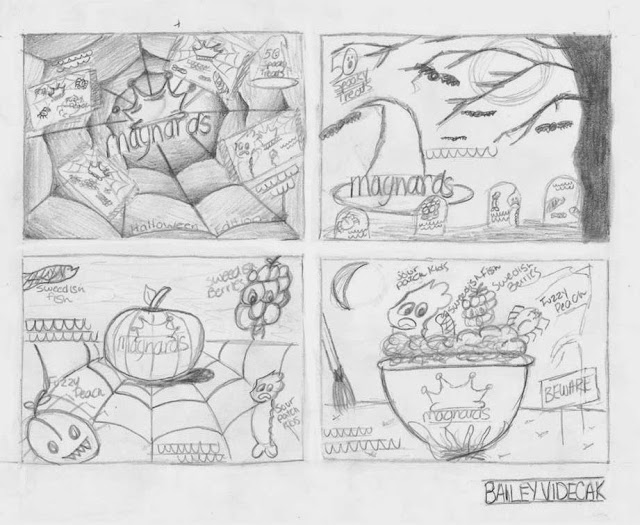...and one showing the female head from front and side views.
Again, working only freehand, sketch a circle in the top LH quadrant of the page as shown. The exact size and placement isn't important. Just try to approximate what you see in this example. Lightly draw guidelines dividing the circle in half both vertically and horizontally.
Extend vertical guidelines down from both sides of the circle, allowing them to taper inward slightly as shown. Extend the centre guideline down as well. Using the half circle as a unit of measure, lightly mark a guideline below the circle so that you have three equal units in height. This is the total height of the head, from the top of the skull to the chin.
Lightly sketch in guidelines 1/3 of the way down from the top of each unit of measure as shown. Note that each guideline represents a landmark on the face, from the top of the head to the chin. Important:Note that the centre horizontal line of the circle if the brow line, NOT the eye line, which is 1/3 below the brow line. Also note the bottom of the circle is the bottom of the nose and that the mouth is 1/3 the distance to the chin - not halfway!
Here's a little trick: if you draw five equal sized ovals touching end to end across the width of the circle on the eye line, the second and fourth ovals are the correct size and shape for the eyes.
Lightly draw guidelines straight down from the centre of each eye to arrive at the corners of the mouth. This is how you establish the width of the mouth.
Since we are drawing a male head, do NOT draw the lips all the way around! Look at how I drew the line for the opening of the mouth and try to mimic it. Add just a sketchy line under the mouth. this represents the shadow under the bottom lip.
Draw a triangle from the centre point of the eye line to the corners of the mouth. point where the sides of the triangle cross the nose line (the bottom of the circle) represent the width of the nose.
Also note how I have drawn angled lines from the side guidelines at around the mouth line to complete the chin. On a male face, always use angled lines, not smooth curves.
Try to draw the nose in the manner shown. A dip in the centre, slight upwards curves for the nostrils, then curved verticals for the outsides of the nostrils.
Extend the eye and nose guidelines outward a bit at both sides of the head. This gives you the height of the ears. Draw a shallow "C"- shaped curve for the outside shape of the ear.
Try adding the interior ear lines as I've indicated. You can now heavy up the eyebrows 9use angular lines as shown) and the top lip and bottom lip shadow, also as shown.
Now extend all the horizontal guidelines across to the right side of the page.
To draw the head in side view as show at the top of this page, follow the instructions at this link
Week Ten Sketchbook Assignment: Sketch a self-portrait in both front and side views as shown in the two sheets at the top of this post.
If you were in this week's class, submit jpegs (DO NOT ZIP THEM!) of the drawings you did of the two members of your group PLUS the self-portrait sketch to the Week Ten Sketchbook dropbox. If you missed this week's class, submit the two pages at the top of this post PLUS the self-portrait sketch to the Week Ten Sketchbook dropbox.








































